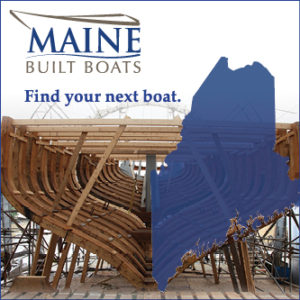By Sheila Dassatt
Most of you know that I have been working with the Downeast Lobstermen’s Association for a while now. This July marks my 20th year being affiliated with the association and I am very proud of representing Downeast Maine and it’s fishing and marine industry.
We have struggled with certain issues for as long as I have been involved, we have fought certain battles and are continuing to fight these battles such as protecting whales and now protecting the threat of our fishery from wind power that includes massive wind turbines along our Gulf of Maine Coast. We have studied the mercury content of our lobsters from certain drain offs from factories and worked to make sure that these issues are cleaned up so that the lobsters and marine wildlife are safe from this kind of toxic harm. This is all just the tip of the iceberg when it comes to working with all of the regulations that we are now facing. The new requirements that are being asked of the fishermen are very involved, most requiring electronic entry (which most still don’t have the equipment to do) and a lot more rope work than ever before, just to be whale compliant. This is all very expensive to the fishermen as well. It costs a lot just to meet the requirements and make ends meet after expenses.
Last week, Mike and I took a trip to Jonesport-Beals so we can look in on the Jonesport Shipyard, which is under new ownership by Jon and Ann Johansen. We didn’t make it to their open house, so we took a beautiful day and headed Downeast. We also wanted to see how the coastline and docks looked after those terrible January storms.
Now I need to say to all that are interested and care about helping the fishing industry, That this is an area that totally depends on a certain way of life. It is a beautiful and hard working area that has virtually been untouched for years. I took the time to write down the working establishments that support this area. If you take the time to read this, you will get the picture.
Traveling to Jonesport-Beals, we went through various towns that have stayed the same for years, which can be a beautiful thing. One of the big industries that we passed through is that it’s almost time for the blueberry harvest. I’m sure that you’ve heard of Wyman’s Blueberries. It is almost that time of the year and things are ramping up for that. This all takes in harvesting, trucking them to process and getting them to their destinations in the market place. As you go further “down,” you will turn by Friendship Trap, where they show the largest lobster trap in Maine! This is directly across from a shop that looks like a bunch of blueberries. When we head to our destination, we had a good idea of how folks live and survive in this rural area. We passed Dennis Welding and Marine, woodworking shops and places that sell firewood. The closer that we got, we saw a place that buys and sells clams and a large bait facility which I believe belongs to the Durkee Family. We also went by the “Wreaths Across America” facility! This is such a wonderful thing that they do for all of our veterans.
As we entered town, we saw T. A. King and the Church True Value accompanied by Hamilton Marine. I remember the IGA across from it that is now closed and boarded up. Why am I painting this picture? Well, this is a very hard working area that depends on a certain way of life. We do not want to see this go away in time simply due to regulations and “progress” called green energy, such as windmills and even these solar fields. They take up good fields that can be used for a better survival purpose such as blueberries, hay and a place for our wildlife to exist.
Our trip through Beals took us by A. C. Lobster, where most of the lobsters are purchased and trucked out to further destinations. This took us by Barney Cove, Alley Bay and the Fishermen’s Co-op. As you cross the bridge to Beals, we also saw the U. S. Coast Guard Station, which is very important to the area.
At the end of our road through Beals, we ended up at the Downeast Institute, which is headed up by DEI’s Director of Research, Brian Beal. This is the state’s first and only public shellfish hatchery. DEI’s specialty is raising juvenile shellfish for fisheries stock enhancement and research purposes. They also produce food for shellfish through stock phytoplankton culture system and mass algal system. They do have facility tours. If you are interested in a tour, you can call 207 497-5769.
Again, one of our concerns was that a lot of the docks and waterfront facilities are not large municipalities, which the large ones with ten or more workers, are the ones that have been receiving help with waterfront restoration. We have not given up on helping these traditional waterfront docks that have been established for years. This is all a way of life and we need to put more focus on helping to restore whatever they need to make a go of it for our future generations.



